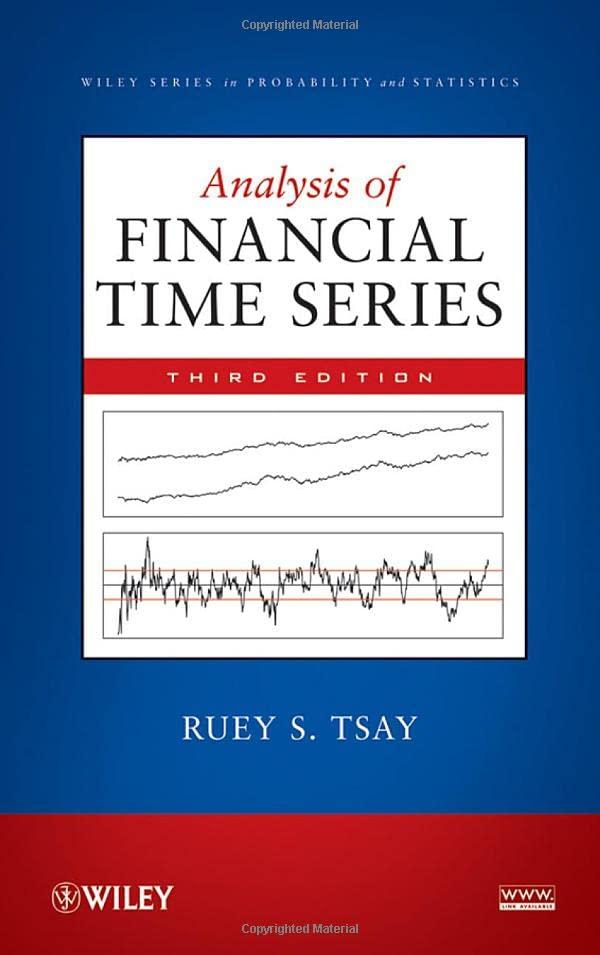Consider the data set of the previous question, but focus on the daily simple returns of the
Question:
Consider the data set of the previous question, but focus on the daily simple returns of the S&P composite index. Perform the necessary data analysis and statistical tests using the 5% significance level to answer the following questions:
(a) Is there any weekday effect on the daily simple returns of the S\&P composite index? You may employ a linear regression model to answer this question. Estimate the model, check its validity, and test the hypothesis that there is no Friday effect. Draw your conclusion.
(b) Check the residual serial correlations using Q(12) statistic. Are there any significant serial correlations in the residuals? If yes, build a regression model with time series errors for the data.
Previous Question:
Consider the daily simple returns of IBM stock, CRSP value-weighted index, CRSP equal-weighted index, and the S\&P composite index from January 1980 to December 2008. The index returns include dividend distributions. The data file is d-ibm3dxwkdays8008.txt, which has 12 columns. The columns are (year, month, day, IBM, VW, EW, SP, M, T, W, H, F), where M, T, W, R, and F denotes indicator variables for Monday to Friday, respectively. Use a regression model to study the effects of trading days on the equalweighted index returns. What is the fitted model? Are the weekday effects significant in the returns at the 5\% level? Use the HAC estimator of the covariance matrix to obtain the \(t\) ratio of regression estimates. Does the HAC estimator change the conclusion of weekday effects? Are there serial correlations in the regression residuals? If yes, build a regression model with time series error to study weekday effects.
Step by Step Answer:





